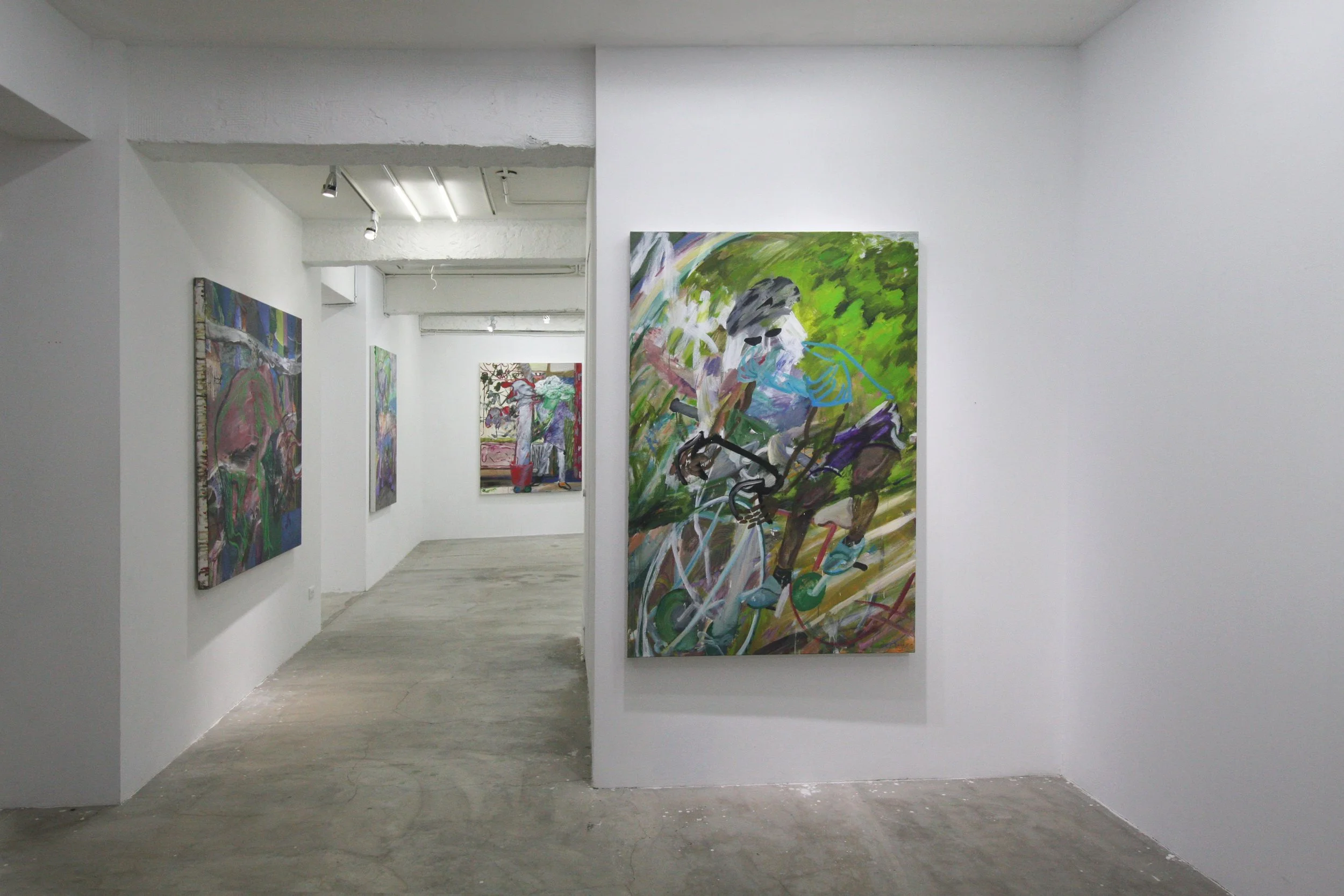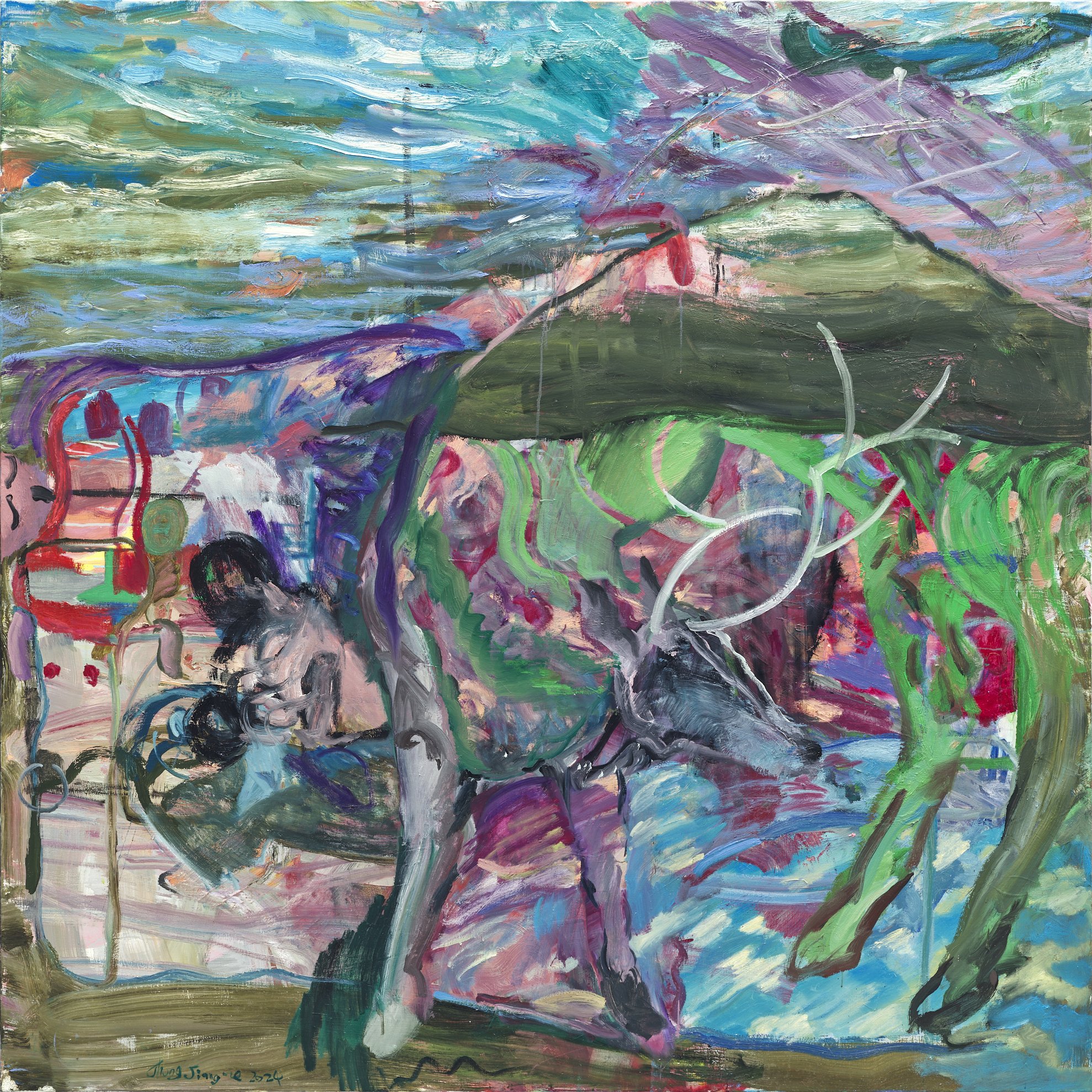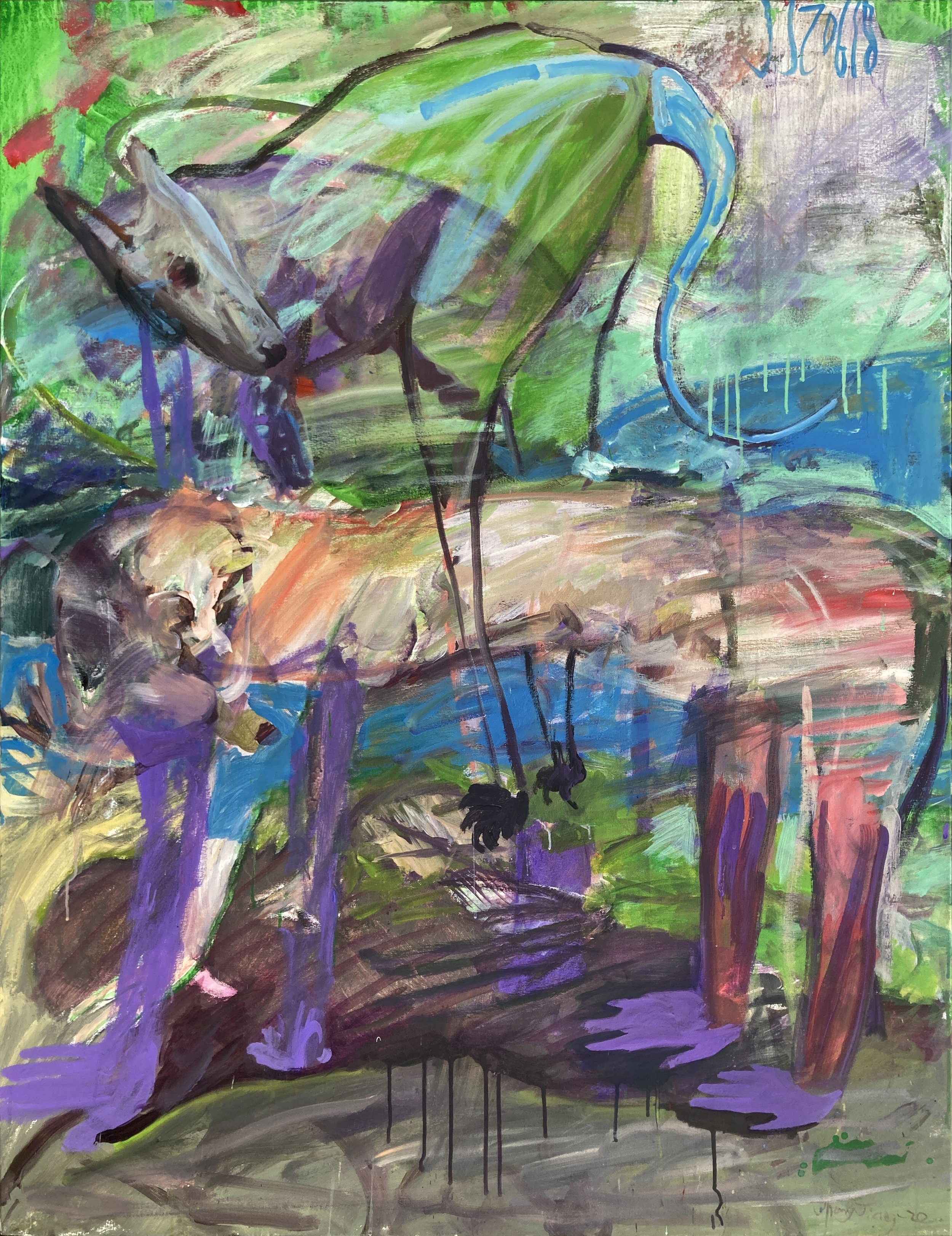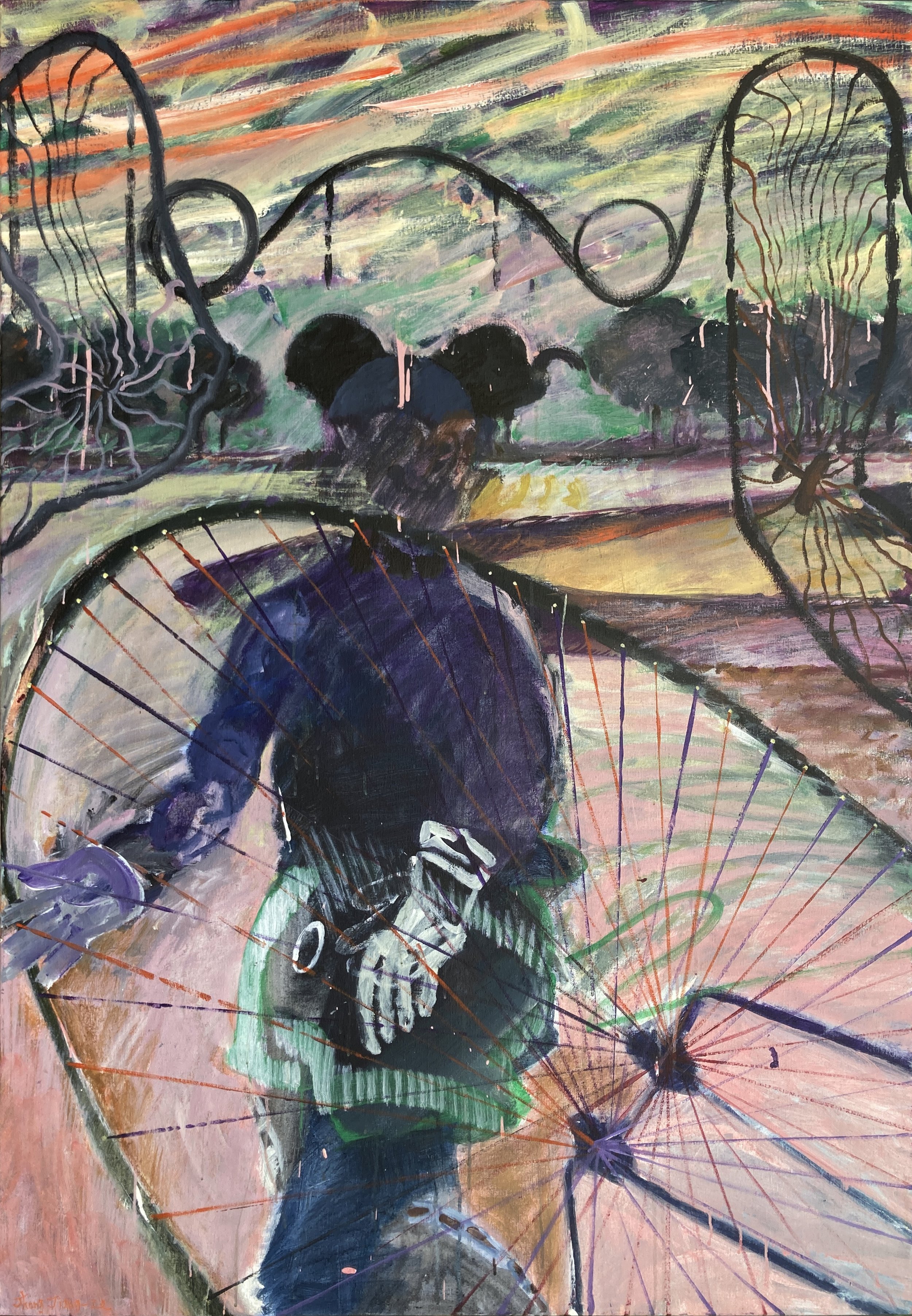Jiang-Ze Jhong: THE OPEN UNIVERSES









Nunu Fine Art Taipei is pleased to present Jiang-Ze Jhong: The Open Universes, the Taipei-based painter’s first solo exhibition with the gallery. The exhibition will open on Monday, August 12, 2024, at 4:00 PM and will be on view until September 29, 2024. We are excited to show Jhong’s most recent paintings, with their free-flowing brushstrokes, set out to challenge our awareness while expanding the boundaries of our imagination.
Jiang-Ze Jhong's artistic practice involves reinterpreting existing images, such as famous paintings, photographs, and movie scenes. His process is to blur and break the clear and defined outlines of his source images, often mixing unre- lated visual elements to turn the pictures into vibrant and imaginative scenes. His large-scale oil paintings feature pow- erful and unpredictable brushstrokes, creating an unnerving sense from the flow of images, leaving viewers feeling both unsettling and intrigued.
Since his student days, Jhong has constantly explored various theories through extensive reading to help him contemplate the nature of painting. He particularly admires the works of Francis Bacon, drawn to an indescribable quality in them that he has continually tried to embody in his creations. In recent years, he encountered the concept of "The Need for Cognitive Closure" proposed by social psychologist Arie Kruglanski. He immediately connected this concept to Bacon's works and found that he could make a use of it to further articulate his artistic pursuits.
"The Need for Cognitive Closure" describes the psychological state of urgently desiring definite answers when facing ambiguous situations. Any answer, regardless of its correctness, is more acceptable than uncertainty. "Closure" signifies the moment a decision or judgment is made. Upon first encountering this concept, Jhong was immediately inspired to apply it to painting, exploring the concept of "non-closure" and ambiguity on his canvases abstaining from perfection or absolute answers. He achieves this by constantly modifying his paintings, covering, and overlapping layers to blur the meaning of the original imagery, making it difficult to achieve “cognitive closure”.
In the painting, Animal-themed Game, one can observe how the original image is partially altered and partially pre- served through the path of creation. The decisive lines reveal the artist's sense of improvisation in painting, evoking imagery that alternates between human and animal-like forms, embodying multiple meanings and bringing about a sense of uncertainty – qualities that Jhong actively pursues in his work. By resisting one-way interpretation, he main- tains cognitive non-closure and invited open ending meanings. Speaking of the blurred faces in the painting Amusement Park, he says, "Sometimes you see artists draw a line over the eyes akin to anonymized photos, which removes the possibility identity recognition. My approach is similar albeit less direct. I don't like clarity, as it leads to closure." Jhong's paintings provoke the viewer's desire to comprehend and explore, instilling a strong curiosity with their ambiguous nature. He candidly states, "I greatly appreciate the sense of confusion in a painting, as I think it is a remarkable quality, and prompts continuous overlaying in search of ‘points of confusion’ within the artwork."
To stimulate inspiration, Jhong often rotates his paintings and starts anew, generating new images from the existing foundation. The existing images then influence the subsequent development, no longer being solely under his control. Looking at paintings like Deer and Cattle Below the Mountain or Bullfight, one can perceive the intriguing aspect of the composition appearing both vertical and horizontal. In Deer and Cattle Below the Mountain, from certain angles, one can make out human-like figures with layered brushstrokes creating an interconnected portrayal of deer, cattle, and humans. Bullfight portrays the violent clash between the animals from an intuitive perspective. The green lines in the work can be seen as muscle textures, visualized energy, dynamic effects, or traces of spiritual imagination. These works reveal the passage of time through layered paint, capturing "accidents" and cognitive distortions.
The title of the exhibition, The Open Universes, derives from a book Jhong read when he was a student. By nature, he maintains a sense of skepticism and uncertainty towards definite things, so the title of this book deeply resonated with him and continually resurfaced in his mind over the years. The philosophical and scientific inquiries posed by the book focus on the dialectics between determinism and indeterminism. Jhong states, "The theory of cognitive closure is a useful tool for discussing artworks, but the exhibition title can encompass broader themes, such as a value or a propo- sition, like 'The Open Universes,' which embraces cognitive closure while preserving broader possibilities for thought."
The exhibition marks the artist's first collaboration with Nunu Fine Art. It showcases works that are derived from the accumulation of the artist’s explorations and pursuits from the past twenty years. These works were also influenced of his recent discovery and borrowing of the concept of "The Need for Cognitive Closure" that not only resonated in him and but also helped him to articulate his artistic aspirations.
Artist statement
Cognitive Ambiguities in Painting - When Cognition Remains Unlocked
“The Need for Cognitive Closure,” a concept introduced by social psychologist Arie Kruglanski, refers to the motivation and desire to resolve ambiguity by arriving at a definite answer, regardless of what that answer may be, rather than confronting uncertainty. Closure signifies the moment a decision or judgment is made. In uncertain situations, this lack of cognitive clarity triggers a yearning for certain apprehension. When I first encountered this concept, it inspired me to apply it to my painting practice, as it reminded me of the works of Francis Bacon. This notion helped me to access some of the most captivating elements in certain paintings, especially those by Bacon, and made me recognize my own desire to achieve something very similar in my work.
The notions of incompleteness and imperfection that has been accepted in painting since the Impressionists very much interests me. Incompleteness has evolved in art history, as viewers engaged more intuitively with artworks, and the understanding of the possibility of concluding without closure become more mainstream. Consequently, incompleteness came to be regarded as a form of completeness.
The lack of cognitive closure is also multifaceted as it refers to the multitude of suggestive, intriguing, and uncertain meanings that exist in the space before closure. The well-known psychological Mooney Face Test illustrates this concept with images in which figure and background flips, like in the one that shows a vase or two faces in profile - depending on the viewer’s perception.
So, what do I aim for, closure or non-closure? Strictly speaking, neither quite fits. The closest scenario would be to maintain "the need for cognitive closure," meaning invoking and sustaining the desire for cognitive search within uncertain contexts, fueled by curiosity. This entails walking the tightrope of ambiguity, balancing between certainty and uncertainty. Painting becomes akin to swaying on a “cognitive swing” oscillating between closure and non-closure until capturing a “cognitive divergence.”
Evoking the need for closure while remaining unresolved, along with the potential for extended multiplicity, can create confusing sensations, which I greatly appreciate in painting. This sense of doubt is a remarkable quality, prompting continuous overlaying in search for “points of confusion” within the picture.
I enjoy juxtaposing different inspirations and meanings, and thus creating ambiguity and a psychological play in my imagery. Ultimately, the focus is on what the work conveys. Focusing only on the cognitive perspective narrows the discussion on image recognition so I much prefer an approach driven by personal preferences, intuition, sensation, and perception. From the viewer’s perspective, encountering indescribable or speculative scenarios, while maintaining an open, intuitive view allows one to capture the visual language, sensory thrill, and cognitive playfulness a painting can offer.
Cognitive anomaly in paintings might appear in the forms of suggestiveness, ambiguity, obscurity, chaos, multiplicity, uncertainty, or incompleteness. It may seem absurd, but it is never random; just potentially inconspicuous. I hope for my images to evoke feelings of puzzlement, curiosity, contemplation, anxiety, surprise, unexpectedness, and through those, to prompt repeated scrutiny.
Press
The Necessity of Getting
Lost: The Open Universes
by Jiang-Ze Jhong
By Ching-yueh Roan, August 18, 2024 full text (EN) / full text (CN)

